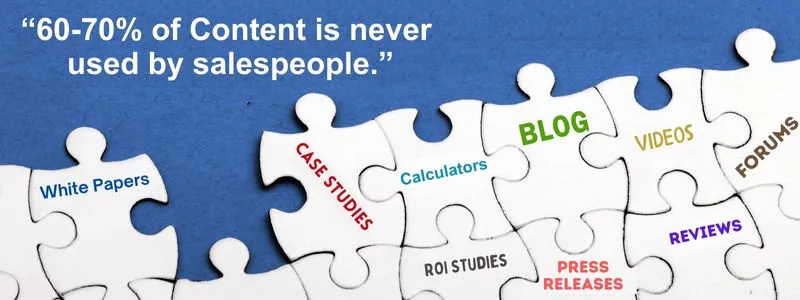
If you’re in the customer advocate practitioner community you already know why developing and curating customer-centric content is a must-have component of your customer advocate program. When it comes to making decisions about technology, B2B buyers value peer opinions above all other vendor-produced content.
Setting a quota of X case studies or videos in a vacuum is not a viable program goal. Aligning your content development plan to your company’s primary growth goals, your north star, is paramount. This eBook covers the process of goal alignment. Once you’ve got that locked in, take these things into account.
What’s surprising, given all this data on the value of customer content, is that many companies aren’t optimizing their use of customer stories beyond the marketing qualified lead generation stage. According to the Content Marketing Institute’s 2019 B2B Trends survey, employing well developed customer-centric content throughout the sales cycle is still relatively rare. Certainly, customer stories are great tools for lead generation, but once prospects do connect with sales, it is even more critical to deliver the most meaningful content to propel prospects through the rest of the journey.
The sales journey isn’t straight or consistent from prospect to prospect. Different questions and concerns will surface at different times. Still, you need to provide a variety of customer-derived content to meet prospects’ needs. When prospects are just testing the waters, short, catchy sound bites or video testimonials can be just the thing to grab attention and open the door. Later on, a robust ROI case study may be the tipping point leading to a final reference call or site visit. A Gartner study found, “95% of buyers buy from someone who gave them content at each stage of the buying process.”
How do you ensure you’re spending your content production time wisely? By consulting with your stakeholders to pinpoint exactly what they need, and when. Here are the most common stakeholders that should be included in your discovery process because they rely on your program’s “assets.”
Here are the questions that you should ask when meeting with your peer groups:
This last question comes from a context of ranking all content on a spectrum relative to the content’s level of candor and granularity. More granularity assumes the buyer is ready to commit more attention and effort to understanding your solution. Think ROI case studies or analyst reports.
The clear takeaway is that if you make your content easy to find and designed to meet the needs of Marketing and Sales, you’ll be ahead of many of your competitors. Gartner found that “Less than 40% of marketers engaged in content marketing have a defined and documented strategy.” Without that strategy, how can a Sales or Marketing organization deliver precisely what your prospects want—relevant, trustworthy content that speaks directly to their requirements and increasing confidence in their decision.
Producing the content is just the beginning of the process. Here’s how you maximize your investment:
To find out more ways of making your customer reference program indispensable, download our free eBook or read our customers' success stories.
